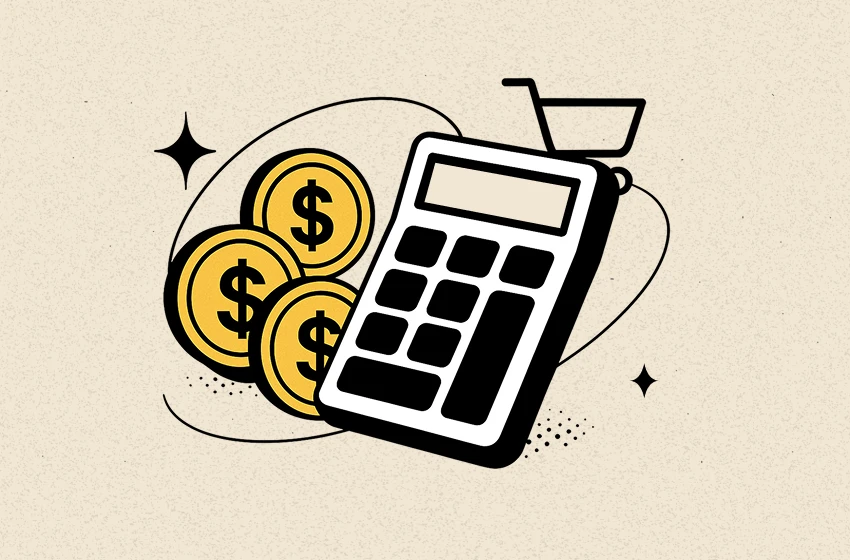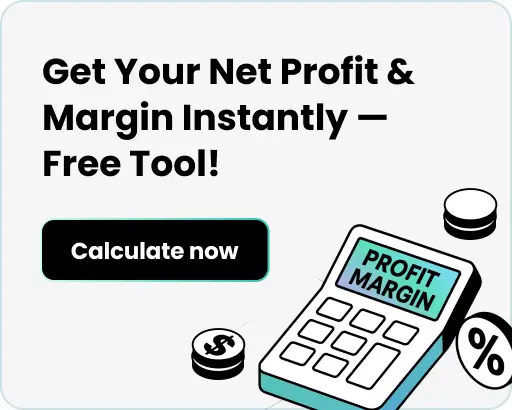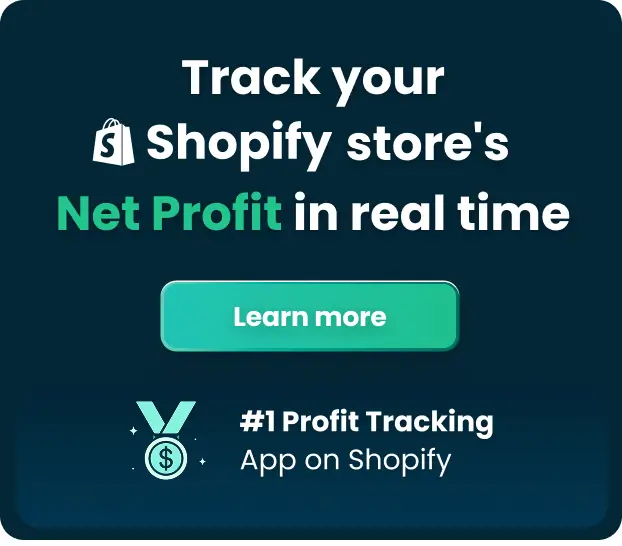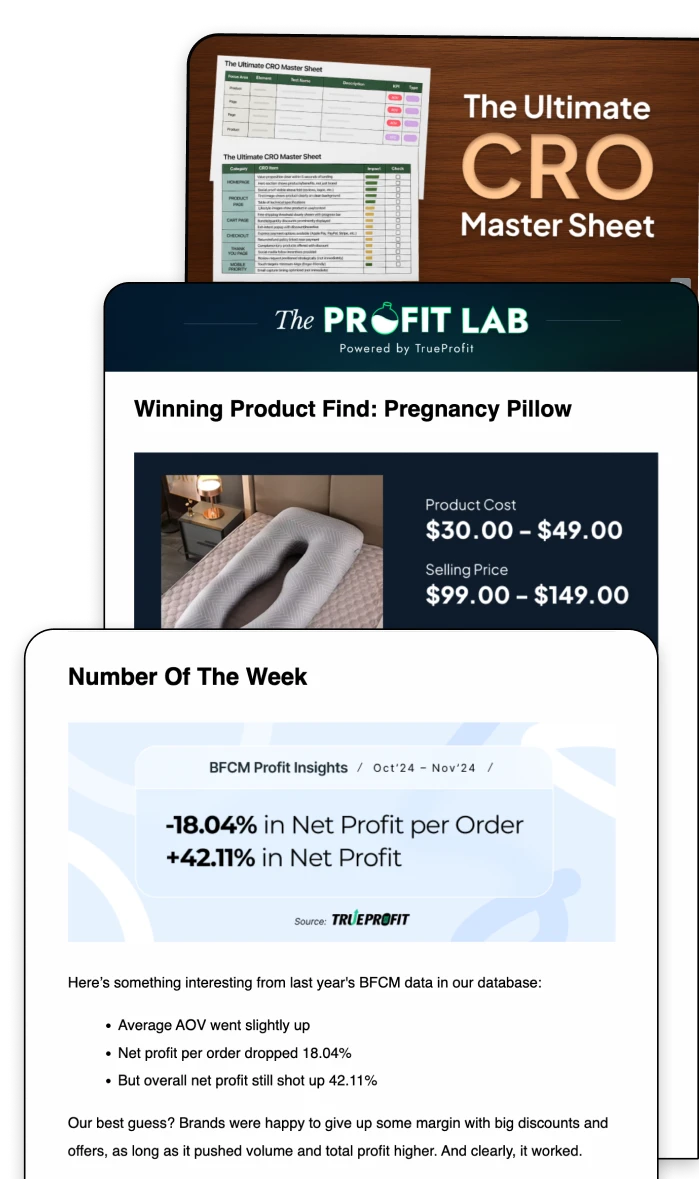Shopify Fees Calculator: What You’ll Actually Pay in 2025

Running a Shopify store comes with more than just the monthly subscription. This guide will act as your Shopify fees calculator - explaining all the fees you’ll encounter including payment processing, transaction charges, and optional add-ons. As a result, you can calculate your real costs and plan your store budget with confidence.
Two of Shopify’s Core Fees Explained
Understanding Shopify’s core fees is crucial to running a profitable store. Shopify charges a variety of fees, including transaction fees, payment processing fees, and more. Below is a breakdown of the two main fees you’ll encounter in this Shopify fees calculator breakdown:
1. Shopify Pricing Plans
Shopify offers four pricing plans, each with different features and costs. Here’s a quick look at what each plan offers and the pricing:
When Should You Upgrade Your Shopify Plan?
The choice of which Shopify plan to use depends on your store’s revenue and needs. Here’s a rough guide to when it might make sense to upgrade:
- Upgrade to Shopify: If your annual revenue is around $130,000, you’ll benefit from lower transaction fees and additional features like gift cards and better reporting. Merchants often complement this with an upsell app for Shopify to increase average order value and offset fees.
- Upgrade to Advanced Shopify: If your revenue exceeds $1 million, the Plus plan offers more detailed reports and lower processing fees, making it a more cost-effective option.
2. Shopify Transaction Fees
Shopify charges transaction fees when you use a third-party payment provider like PayPal or Amazon Pay. However, these fees depend on which Shopify plan you’re subscribed to:
Shopify Plan | Transaction Fee |
|---|---|
Basic | 2.0% |
Grow | 1.0% |
Advanced | 0.6% |
Plus | Competitive rate for high-volume merchants |
Shopify Payments Fees
If you use Shopify Payments, you don’t have to pay the additional transaction fees from above. However, Shopify still charges processing fees for each sale:
Shopify Plan | Processing Fee |
|---|---|
Basic | 2.9% + 30¢ |
Grow | 2.6% + 30¢ |
Advanced | 2.4% + 30¢ |
Plus | 2.4% + 30¢ |
These processing fees are lower than the fees from third-party payment providers, making Shopify Payments a cost-effective option for most store owners.
PayPal & Other Payment Gateway Fees
If you choose to use PayPal or another third-party payment provider, you'll pay their standard transaction fees, which are typically 2.9% + 30¢ per transaction. If you don't use Shopify Payments, you'll also incur Shopify’s transaction fees depending on your plan. This can make your overall payment processing more expensive.
In summary, understanding these core fees and comparing Shopify’s plans will help you determine which plan is best suited for your business and budget. By choosing the right payment provider and plan, you can optimize your costs and maximize profitability.
Common Hidden Shopify Fees (That Add Up Quietly)
While Shopify’s monthly plans and transaction fees are well-known, there are a few costs that many first-time sellers don’t realize until they’ve already launched. These aren't meant to scare you off - they’re just important to factor into your budget early so you can plan smarter.
1. Theme & Design Fees
Shopify offers several free themes (like Dawn), which are a great starting point. But if you want more customization or a premium design, paid themes can cost a one-time fee of $180–$350. These premium themes may come with extra features that help with conversion, like advanced filtering or dynamic sections.
2. App Subscription Costs
Apps help you add new features to your store—like upsells, reviews, live chat, or email popups. Some are free, but many work on monthly subscriptions ranging from $5 to $50+ per app. It’s easy to go over budget if you install too many at once. For example, a powerful Shopify promotion app like BOGOS could cost from 29.99$ to 99.99$ based on your current Shopify plan.
3. Email Marketing & SMS Fees
Email and SMS are powerful tools for bringing customers back—but they’re rarely free beyond the first few emails. Tools like Shopify Email give you 10,000 free emails/month, then charge a small fee per extra 1,000 emails. SMS platforms (like SMSBump or Klaviyo SMS) also charge based on message volume and country.
Tip: Start with email first (it’s cheaper), and only move into SMS when you're seeing consistent traffic.
4. Domain Name & Renewal Charges
If you want your store to look professional, you’ll need a custom domain (like yourstore.com). Shopify domains typically cost $14/year, and renewals happen automatically unless you cancel.
5. Fulfillment & 3PL Expenses
If you scale beyond dropshipping—or use a print-on-demand or fulfillment service—you may incur costs for packing, storage, and shipping. These vary widely based on weight, location, and provider. Even with dropshipping, you’ll want to budget for refunds, reships, and occasional losses.
Shopify Pricing Calculator based on Store Size
Monthly Shopify Fee for Store Making Under $1,000/month
Cost Type | Estimated Cost (Monthly) |
|---|---|
Shopify Basic Plan | $39 |
Shopify Payments Fees | 2.9% + 30¢ → ~$20 for $500 via SP |
PayPal Fees + Transaction | 2.9% + 30¢ + 2% Shopify fee → ~$35 |
Apps (2 free + 1 paid) | $15 |
Email (Shopify Email) | Free for up to 10,000 emails |
Domain Name (Annualized) | ~$1.20 (based on $14/year) |
Total Estimated Monthly | ~$110 |
Monthly Shopify Fee for Store Making $5K–$10K/month
Cost Type | Estimated Cost (Monthly) |
|---|---|
Shopify Grow Plan | $65 |
Shopify Payments Fees | 2.6% + 30¢ → ~$130 for $5K SP revenue |
PayPal + Transaction Fees | 2.9% + 30¢ + 1% Shopify fee → ~$160 |
Apps (3–5 essential tools) | $50–$100 |
Email Marketing | ~$20–$50 (Klaviyo or Shopify Email) |
SMS (Optional) | $10–$30 if used |
Domain Name (Annualized) | ~$1.20 |
Total Estimated Monthly | ~$310–$460 |
Monthly Shopify Fee for Store Making $50K+/month
Cost Type | Estimated Cost (Monthly) |
|---|---|
Shopify Advanced Plan | $399 |
Shopify Payments Fees | 2.4% + 30¢ → ~$1,300 on $25K via SP |
PayPal + Transaction Fees | 2.9% + 30¢ + 0.5% Shopify fee → ~$1,450 |
Apps & Integrations | $150–$300 (custom reporting, upsells, etc.) |
Email & SMS | $100–$300 (depending on list size) |
Fulfillment/3PL Costs | Varies ~$3,000+ if using warehouse/shipping |
Domain + Theme Costs | $1.20 + optional theme amortization |
Total Estimated Monthly | ~$6,400–$7,500+ |
Why Does This Breakdown of Shopify Fee Calculator Matters?
Understanding these core fees and comparing Shopify’s plans will help you determine which plan is best suited for your business and budget. By choosing the right payment provider and plan, you can optimize your costs and maximize profitability - especially when you factor in your margins using a reliable profit margin calculator in your growth stage.
This is where TrueProfit comes in. It’s a powerful Shopify profit tracker app designed specifically for Shopify store owners who want to take control of their finances. With real-time, automated insights, TrueProfit simplifies the complexity of your store’s data and helps you track what truly matters: your net profit.
Instead of sifting through endless spreadsheets and metrics, TrueProfit delivers accurate, actionable insights that allow you to make smarter decisions, improve profitability, and grow your business - without the guesswork.
Start optimizing your store’s financial health today with TrueProfit and ensure every dollar spent is working for your success.
Understanding Shopify fees is crucial for managing your store’s profitability. A reliable Shopify fees calculator helps you estimate costs accurately and plan better. Use it regularly to stay on top of expenses and make informed pricing decisions.
Lila Le is the Marketing Manager at TrueProfit, with a deep understanding of the Shopify ecosystem and a proven track record in dropshipping. She combines hands-on selling experience with marketing expertise to help Shopify merchants scale smarter—through clear positioning, profit-first strategies, and high-converting campaigns.





 Shopify profits
Shopify profits


